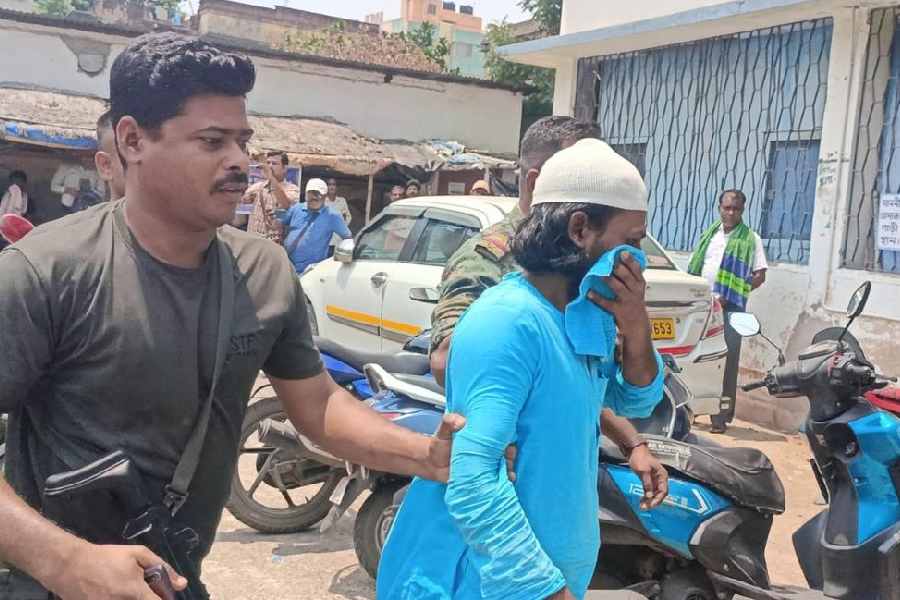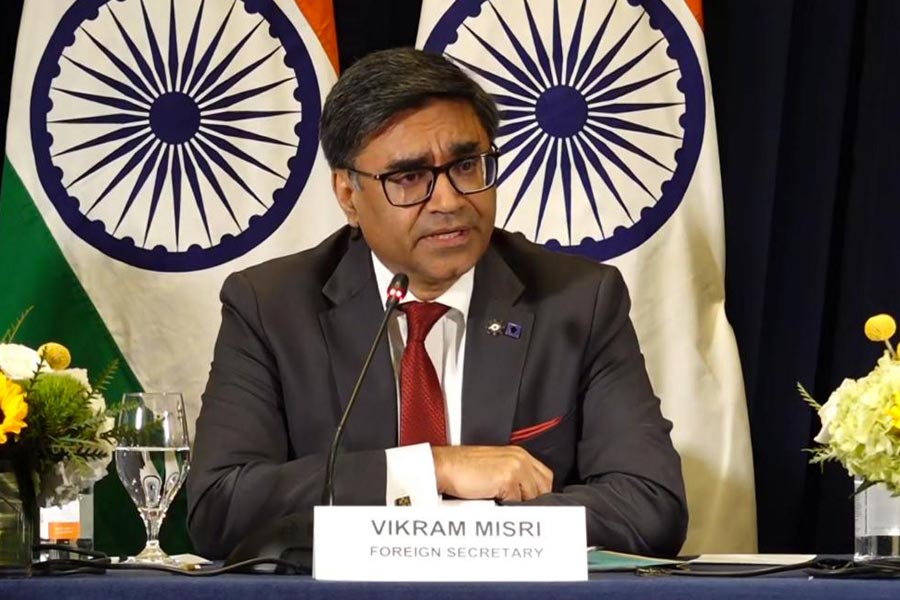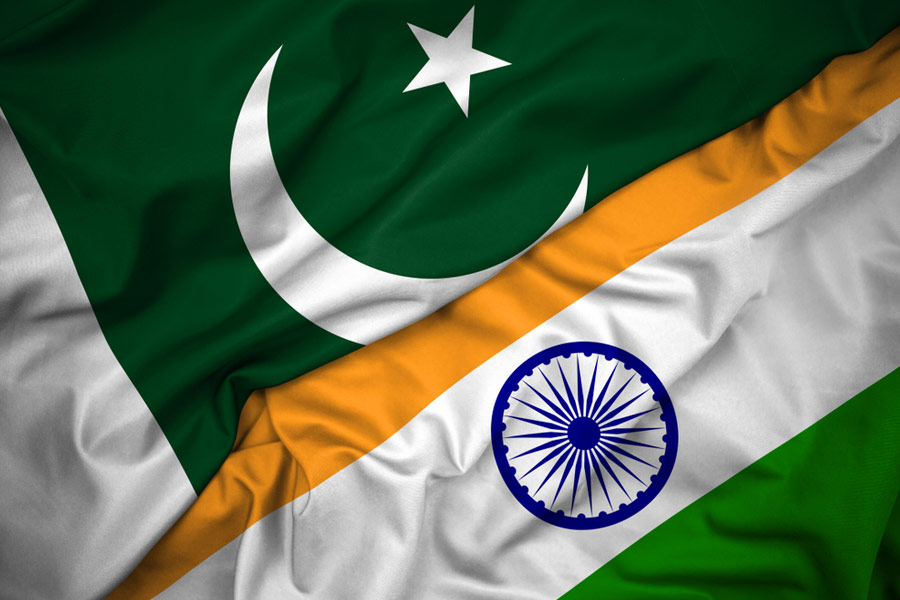 |
| Members of the Mullick family gather before Singhabahini at the Sovabazar Mullick residence. (Bishwarup Dutta) |
She is seated on a huge silver throne, her feet resting on a sabre-toothed lion. The front paws of the lion are placed on an elephant’s head. In her four hands are conch, chakra, bow and arrow. On her head rests a quintuple-crested crown. The worship of Singhabahini Ma, the household deity of the Mullicks, completed four centuries last week with the entire clan gathering at the Sovabazar residence of Hemendra Mullick.
“Our deity is worshipped round the year by turns. On Saptami morning, we brought her home in a procession from the Hnaspukur branch of our family where she was staying for the past couple of months. The bodhan (awakening) was done the night before on the ghot,” said Amitabha Mullick, 47, dressed in crisp white dhoti-panjabi, like all the other men.
The women too were traditionally attired. “It is our custom to wear certain kinds of jewellery on the Puja days — bichhe waistband, kada anklet, large nose ring.... A thin bangle (rooli) gets added as each day passes by,” says Purnima Mullick, showing the four coloured roolis in her hand on Navami night. “On Ashtami and during Sandhi puja, we wear red-bordered white sari for the dhuno pora ritual that the married women of the house perform,” she adds.
Gauranga Mullick, a family elder, explains how the deity of such distinct iconography came to be worshipped by them. “We are gold merchants hailing from Saptagram, Hooghly. Once the river Saraswati got clogged we shifted to Calcutta,” he said. The family’s original surname was Dey. In the Mughal period they got the title Mullick and founded a zamindari in Tribeni. In emperor Akbar’s time, ancestor Banamali Mullick prospered through trade. It is his son Baidyanath who heard of Singhabahini being worshipped in secrecy by a priest in the hills of Chittagong. The priest who served King Man Singh of Amer had fled Rajasthan after the death of Akbar’s Hindu general, carrying with him the king’s household deity. Baidyanath installed the goddess in his zamindari seat circa 1613.
Of the 450 partners, the house of Hemendra Mullick was chosen as it has a traditional thakurdalan. “It is a singular honour,” said the 69-year-old, who manages the deity’s debuttar property of Bilas Ray Katra in Burrabazar.
The Mullicks are Vaishnavites but worship the Devi following Shakta customs. “A goat sacrifice takes place but we do not touch the meat,” says Gauranga. Sukumar Das Karmakar has been performing the job all his life. “As a 10-year-old, I used to hold the goat for my uncle. I started off myself after seven-eight years. The goddess is kind. It has never taken me more than a single blow,” says the old man, who disposes of the sacrificial meat.
No rice offerings are made as bhog. Other than fruits and sweets, it is mostly fries — luchi, singara, kachuri etc. “No salt, chilli or tomato is allowed in the bhog. Yet it tastes divine,” smiles Gauranga’s wife Sunita.
The daughters-in-law of the youngest generation, Debjani and Kalyani, may have got married a decade ago but this is the first time they saw the puja happening at home. “The last time we got the turn was in 1992. This is so thrilling,” they said, while attending to guests. Each left with a large packet of bhog.
This time to make the occasion a grand affair some other family members pitched in with funds. “We have brought out commemorative gold and silver medallions, souvenir, badge, photo and poster. This is a once-in-a-lifetime experience for all of us,” said Gauranga.










